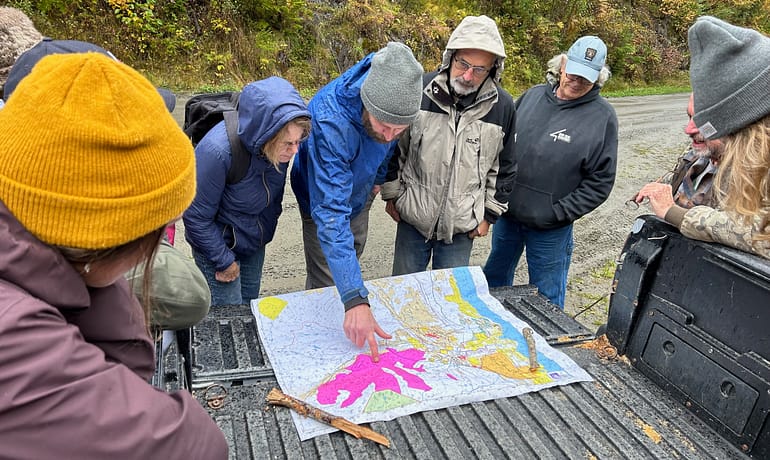Community forest proposed to grow
Published: August 11, 2010 8:00 AM
Updated: August 11, 2010 12:00 PM
A town council meeting is a strange place to hear a fiddle.
But on July 27, a whole troupe of Bulkley Valley Youth Fiddlers lined the benches of Smithers town hall to play a musical thank-you during a presentation to council by the directors Wetzin’kwa community forest.
The young fiddlers received $4,000 —one share of the $120,000 awarded to 31 community groups this year by the Wetzin’kwa Community Forest Corporation (WCFC).
Another $44,000 went to research or recreation programs in the forest itself, such as a Wet’suwet’en project to revive the forest’s huckleberries and other botanicals.
If town council gets its way, such grants are likely to grow.
The town of Smithers is proposing to more than triple the annual allowable cut in the Wetzin’kwa — from 30,000 to 100,000 cubic metres of timber.
That would give it the fourth highest cut of all 54 community forests in B.C.
“We would like the uplift to 100,000 cubic metres so that we can sustain our own destiny that much more,” said Smithers Mayor Cress Farrow. Community forest grants help the town depend less on government funding, he added.
In addition to the community grants, the Wetzin’kwa funds the three governing bodies that help to run it: Smithers, Telkwa and the Office of the Wet’suwet’en.
It is also a boon to local forestry.
Bill Golding, general manager of the community forest, said the WCFC spent $1.5 million on local forestry contracts last year — everything from nursery to planning to logging services.
David DeWitt, natural resources manager for the Wet’suwet’en, said that spending is a welcome break from status quo.
“One advantage that the community forest provides, even without this uplift, is that they reinvest profits back into the communities of Telkwa, Smithers and Moricetown,” he said. “That’s something we don’t see with the major licences.”
But Wetzin’kwa directors also hope the higher cut will lessen a hazard that literally faces anyone who looks up to the mountain slopes west of Tatlow Road — a swath of red, beetle-killed pine that is highly prone to fire.
The WCFC started in 2007 with a licence to manage 33,674 hectares of forest on the north, south and west slopes of Hudson Bay Mountain.
Last fall, pine beetles hit the area hard.
Of the whole forest — a mix of lodgepole pine, spruce, sub-alpine fir and Western hemlock — pine makes up about 1.7 million cubic metres.
In the next few years, the beetles are expected to kill up to 70 per cent of that pine.
David DeWitt says he supports a higher cut to take out the infested stands, so long as the logging focuses on pine stands that have little undergrowth or other tree types surrounding them.
Fire hazard aside, Farrow said there is financial pressure to cut the beetle-killed wood quickly.
“We’ve probably got three to five years maximum to get value from those trees,” he said.
Farrow met recently with BC Forests Minister Pat Bell to discuss the uplift. The mayor said he is optimistic that the Wetzin’kwa will get it. In the future, he added, the directors will also look at expanding the forest boundary.
The 2007 licence from the Ministry of Forests gave the Wetzin’kwa a probationary, five-year term. The next licence could run as long as 25 years.
The name Wetzin’kwa means “flowing blue green or clear waters,” a word that refers to the Bulkley and Morice rivers.
Related Post
Province increases funding for community forest wildfire risk reduction
News Release We are pleased to announce that the
BC introduces new measures on old growth, innovation, forest stewardship
New announcement on process and funding for policy reforms



